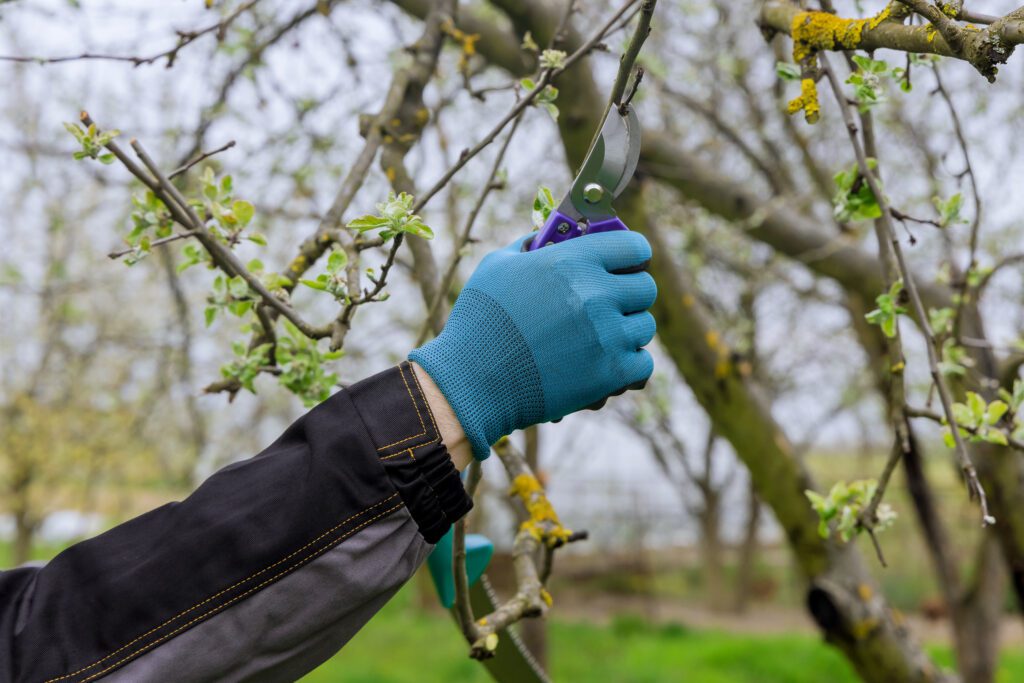
7 Expert Tips for Springtime Pruning to Transform Your Landscape
In the vibrant season of spring, the urge to revitalize our landscapes surges within us. While many enthusiasts await the perfect weather conditions, the truth is, you can kickstart your springtime pruning endeavors with just a sharp pair of scissors. In this guide, we unveil the art of springtime pruning and share 7 expert tips to enhance the health and aesthetics of your plants.
7 Expert Tips for Springtime Pruning
1. Assessing Risks and Signs
Before diving into pruning, it’s crucial to assess the risk factors. If you observe twig or branch movement, unusual leaf color, or signs of distress, refrain from pruning. Focus on plants damaged by summer storms or those with crowded growth. Removing select branches can not only enhance appearance but also promote overall plant health.
2. Timing Matters
Avoid pruning during active storms or rainy periods. Instead, opt for post-spring rains but before new growth emerges, particularly in hotter regions. Timing your springtime pruning activity ensures minimal stress on the plants and optimal results.
3. Precision with Pruners
Ensure your pruners are sharp, limiting cuts to stems not more than 1/2 inch above the soil line. Avoid pruning branches exceeding 1/8 inch in diameter. Precision is key to stimulate healthy growth without causing unnecessary stress.
4. Strategic Pruning Techniques
When pruning limbs, prioritize keeping a piece of the plant on the branch. Cut branches back right at or slightly before their junction with the main trunk or stem. This method discourages curvature or forking, reducing the risk of breakage.
5. Matching Pruners to Plant Types
Select pruners based on your plant’s growth habit. Different blade shapes (long, medium, short) cater to various plant sizes. Taller plants require taller pruners, ensuring a tailored approach to your landscaping needs.
6. Ideal Pruning Conditions
Choose a dormant period for pruning when the plant has halted growth. Avoid pruning during rainy or windy weather to minimize disturbance. Optimal conditions guarantee a smooth springtime pruning process without compromising plant health.
7. Pruning in Stages
To prevent excessive stress and trauma to your plants, adopt a staged pruning approach. Gradual pruning allows plants to adapt and recover, promoting overall resilience and vitality.
Things to Consider Before Springtime Pruning
Timing and Plant Accessibility
Consider the accessibility of bushes and trees before pruning. Prune when leaves are present but avoid rapid growth phases. Refrain from pruning recently planted Japanese Maples or Dogwood trees in their flowering season.
Protective Gear
If pruning before full leaf development, prioritize safety with protective gear. Wear gloves, a face shield, and a dust mask to shield yourself from potential injuries caused by splinters.
Time of Day Awareness
Be mindful of the time of day when pruning. Avoid cloudy days or extreme heat, exceeding 100 degrees F, as it may weaken your plants. Optimal pruning conditions contribute to the overall success of your landscaping efforts.
When to Prune and Other Lawncare Tips
Optimal Pruning Timeframe
The prime time for landscape pruning is early spring, allowing plants to establish their root systems. Make long, deep cuts with your trowel or shovel to enhance soil aeration, water flow, and nutrient absorption.
Weather Conditions Matter
Prune on warm, sunny days before rainfall or after a dry spell. Plants require water between 10:00 A.M. and 3:00 P.M., so prioritize pruning during this period for optimal results.
Post-Pruning Care
Mulch trees within six weeks of pruning and fertilize with a balanced organic fertilizer. Follow a precise fertilizer application schedule to ensure the health and vitality of your lawn.
Pest Control Strategies
Control pest insects during budding, blooming, and seed setting to prevent damage. Remove dead or diseased branches during tree pruning, ensuring optimal tree health.
Call My Neighbor Services For Your Lawn Care Needs
Lawn care can be a challenge, but with My Neighbor Services, maintaining a pristine lawn becomes hassle-free. Our decade-long experience in residential lawn mowing guarantees not only affordability but also expertise. Call our team today at 469-837-2871 for a lawn care experience that surpasses expectations.
